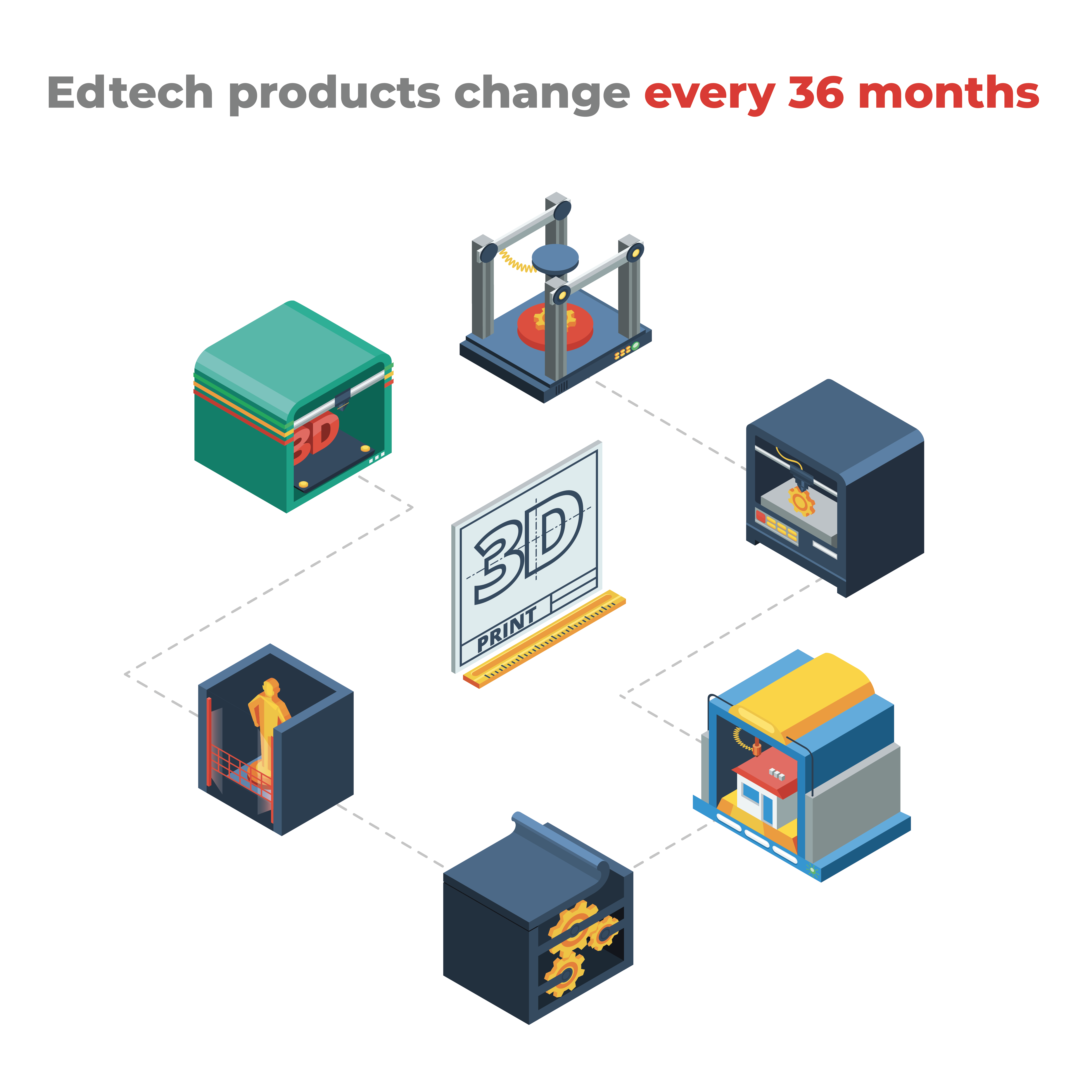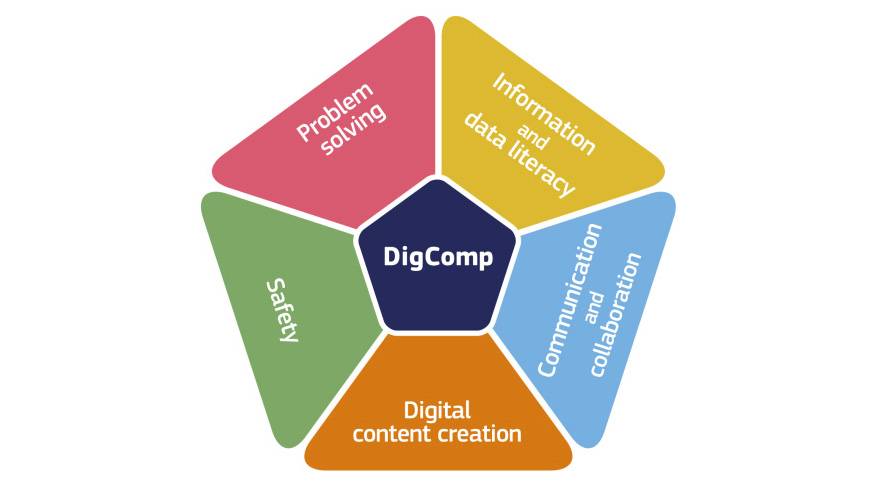UNESCO’S Global Education Monitoring Report: is technology in education all hype and no substance?
Ádám Horváth 2023. 10. 26. 13:12
When UNESCO’s 2023 Global Education Monitoring (GEM) Report came out in the summer, the initial responses ranged from “eye-opening” and “disillusioning” to “about time” and “nothing surprising”. My reaction was mainly a combination of the above. And even now, a couple of months later, I find myself mulling over some of the points it raised.
I’ve been in the digital education field for two decades, and this is the first major report that has gone beyond the question of whether digital technologies can replace traditional educational methods. It’s truly refreshing to see a study that explores technology’s various potential applications in the classroom, taking into account the fast-evolving educational objectives of the 21st century.
Here are some of the takeaways that have resonated with me the most.
The uptake of technology in education is much slower than expected
Despite all the buzz, the adoption of digital tools in the classroom remains far from universal and is unlikely to progress without the support, resources and teacher training it would painfully require.
The PISA survey of 2018 revealed that even in the world’s wealthiest countries, only around 10% of 15-year-old students used digital devices for at least one hour per week in STEM lessons.
Significant national differences exist, however, as shown by the 2018 International Computer and Information Literacy Study (ICILS). In the 12 education systems examined, simulation and modelling software was accessible, on average, to one-third of students, with availability ranging from 8% in Italy to 91% in Finland.

Adding to the complexity, edtech products change every 36 months or so. Not surprisingly, the existing institutional framework is ill-prepared to cope with this crazy pace, lacking both the time and infrastructure for comprehensive review, validation of effectiveness and determining suitable classroom use.

We need new ways to support schools in successfully implementing technology. It’s unrealistic to expect teachers to handle everything when it comes to integrating digital tools in the classroom. They shouldn’t have to keep up with new products, select the right ones and then design lesson plans on their own, only to start all over again in a couple of years.
Governments need to take responsibility for creating opportunities for experimentation, knowledge sharing and promoting best practices through teacher training programmes and partnerships with universities. Yet, this doesn’t mean in the least that teachers should be excluded from the decision-making process, as is unfortunately often the case.
Digital tools do not necessarily make traditional classroom instruction better
Technology is often hailed as a solution to the problems plaguing educational systems worldwide. Yet, the GEM report confirms that digital tools don’t automatically improve traditional classroom teaching. Especially not by themselves. This is a crucial reminder, as many educators and policy-makers tend to view them as a “quick fix” or a “magic bullet” for all kinds of challenges.
The use of, say, laptops in the classroom, will not lead to a sudden increase in inclusivity in education, nor will it dramatically enhance traditional learning outcomes. In fact, evidence on how technology impacts learning is rather inconclusive.
As UNESCO points out, systematic reviews over the past 20 years show that technology use generally has small to medium positive effects on learning outcomes compared to traditional teaching. Its benefits range from enhancing and personalizing instruction to offering ample practice opportunities and fostering student engagement. At the same time, digital technology carries the risk of distraction, may narrow learning priorities to areas best served by tech products and lead to a decrease in human interaction.
Does this mean we shouldn’t use digital tools in education? Absolutely not. The question, however, should rather be what to use them for and how.
New skills are needed to navigate an increasingly digital environment
The thing is, education loses much of its relevance without the integration of digital technology. We live in a world where digital skills are essential for success in both the labour market and our daily lives. Developing these competencies early on has become a must and mostly falls under the responsibility of educational institutions, similarly to building literacy and numeracy skills. Of course, this cannot be done without digital tools – a bit like you cannot teach someone how to ride a bike without a bike.
STEAM activities developing both hard and soft skills in a school in Belgium
In other words, rather than replacing traditional tasks, digital technology in education has a very specific role to fulfil, driven by the demand for new skills necessitated by technological progress itself. Notably, digital skills go beyond simply enabling people to use digital devices. They empower them to make the most of technologies, critically evaluate content, safeguard themselves from risks and act responsibly online. The EU’s Digital Competence Framework for Citizens (DigComp), for example, encompasses five competence areas: information and data literacy, communication and collaboration, digital content creation, safety and problem-solving.

In a traditional school setting, students are typically taught the same material at the same time, then expected to perform the same task, reaching the same results. The problem is the real world doesn’t work that way: simply providing a known solution to a known problem is not enough. Students should be challenged to find solutions to unfamiliar problems that lie ahead. Unfortunately, traditional teaching not only fails to develop the skills required for this new reality, but it also hampers critical thinking and creative problem-solving by relying on a single textbook, teacher and perspective and by discouraging alternative solutions.
When used effectively, digital technology has the potential to boost student engagement, enhance student experiences, simulate real-world situations as well as facilitate collaboration and critical thinking. However, this first requires a shift in mindset.
Let me give you an example from our course materials. In Global Warning, students are tasked with developing educational programmes for schools in different climates. This involves a role-playing activity where each role, such as influencer, scientist and entrepreneur, is assigned a different task to encourage problem-solving from various perspectives.
Working independently, the kids also need to consider their team members’ work, explore digital resources like videos and articles, conduct research and come up with their own solutions. If it isn’t correct, they reflect on what went wrong and how to improve. Importantly, there’s always more than one right answer, and wrong solutions are viewed as steps towards finding better ones, rather than failures.
Problem-solving from various perspectives with Maker's Red Box: after exploring digital resources and conducting research, students come up with their own solutions
Technology should be seen as a means, not an end
A common pitfall when purchasing new tools is prioritizing flashy new educational technology at the expense of pedagogical considerations.
As Audrey Azoulay, Director-General of UNESCO, points out, we have “a deep-rooted tendency to see technological solutions as a universal tool, suitable for all situations, an inevitable form of progress”, which leads to a “confusion between the tool and the solution, between the means and the end”.
Technology should never be used for the sake of using it. This is why in our courses, we make sure that technologies such as 3D printing and laser cutting serve a specific educational purpose. The primary goal is not for a child to 3D print, but rather to enable them to create tangible objects and enhance their cognitive processes, memorization, spatial perception and fine motor skills in the process.
In other words, 3D printers and laser cutters are nothing but tools. If a teacher believes that a different technology would better suit the learning context, they have the freedom to adapt the task accordingly. We provide written and video recommendations, instructions and examples to help educators harness these technologies, but at the end of the day, it’s up to them to decide how and when to incorporate them into their teaching.
Maker's Red Box activities utilize 3D printing to develop skills like collaboration, communication, creativity and responsibility
Rebuild trust through collaboration and clear standards
One major criticism raised in the GEM report is that much of the evidence supporting the added value of digital tools in education comes from those with a vested interest in selling them. It’s time edtech companies, teacher training programmes and schools worked together to establish collaboration circles, where best practices and effective implementation strategies can be shared.
It’s also essential to narrow down the range of technologies and methods schools and teachers can choose from, taking into account measurable quality requirements and proven pedagogical value. A potential solution is the creation of a state-appointed organization that’s responsible for defining quality benchmarks, setting expectations for its members and certifying products that meet its criteria for quality and service. Notable non-govermental examples include the British Educational Suppliers Association (BESA), the European Edtech Alliance (EEA) or Education:Next in Hungary, of which Maker’s Red Box is a proud member.
To achieve meaningful outcomes, the use of technology must always be accompanied by effective teacher training and support.
This entails providing educators with opportunities for professional development, collaboration, mentoring and pedagogical guidance. In addition to comprehensive training courses, teachers should also have access to microlearning. Sometimes, all it takes to acquire proficiency in a specific tool, like using data visualization techniques such as heat maps or word clouds, is watching a 15-minute video.
It’s crucial to remember that teachers are key to unlocking the full potential of educational technology. Human interaction and digital tools should always work hand in hand to create more impactful learning experiences. Audrey Azoulay points out, “no screen can ever replace the humanity of a teacher”.

